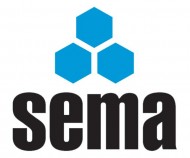Two very different questions this month that involve tolerances and how they should be included into final calculations. The first concerns clearance tolerance and the second, when used in conjunction with a safe working load.
 Tolerances and spacing
Tolerances and spacing
Q. I understand the “gap” between adjacent pallets and the pallet and the racking upright should be a minimum of 50mm. Could you advise on the suggested tolerance between the top of the stock and the horizontal beam above
A. The minimum clearance between pallets, and pallets and uprights is 75mm not 50mm, this will increase to 100mm above and including 9.0m.
The clearance between the top of the load and the next beam level is again 75mm, but this increases to 100mm at 6mt, and 125mm at 9m and above.
The only exception to the above is for a man up truck or a truck equipped with CCTV on the mast where 75mm can be maintained throughout.
Q. We have static 900mm deep pallet racking and I believe the guidance is to store 1000mm pallets allowing an overhang of 50mm front and back.
Occasionally we have larger pallets which are up to a maximum of 1200mm, which would mean a larger overhang of up to 150mm front and back. If I store these larger pallets on the 900mm deep pallet racking am I breaking any law or do I need to store these pallets differently?
A. SEMA recommends a 50mm pallet overhang at the front and back of the rack in the depth of the rack. This reduces the possibility of asymmetric pallet placement, which can cause a number of issues for example:-
• Uneven distribution of load within the racking for which it may not have been designed.
• If the pallet is placed too far within the racking then contact can occur with other structures or pallets in a back-to-back situation.
• If the pallet is placed too far forward then this will reduce the aisle width.
• Is the pallet suitable for the load and beam support positions
Thus the correct solution is to work to recommended figures and have the racking designed accordingly.
SWL and Tolerance
Q. We have a racking system installed, which has a maximum load bearing weight per level of 2040kg, which is on the certificate attached to the end of each rack. The beams used have a safety factor built in of 1.4 meaning that we would have to overload each level by 816 kg before it would totally fail. Currently we are putting pallets into the rack which total 2052kg which according to the certificate issued, we are overloading up to a maximum of 12kg on each level. I am trying to ascertain legally and from a health and safety perspective if we are OK to put the weight (2052 Kg) we are currently putting into each level.
A. It is the responsibility of the suppliers of the product to define the SWL of their product, and a lot of work will have gone into establishing this figure.
You may be able to engage a consultant to re-assess your installation although it is impossible to say whether they would sanction an increase in load carrying capacity over and above the manufacturer’s recommendations.
SEMA is delighted to be working with WLN on the storage Question and Answer Column which is published in WLN on a monthly basis. On the WLN website is a list of previously published columns which we hope you find useful.
Please note that SEMA Users Club members also have access to a comprehensive range of additional storage related questions and answers.
SEMA Technical Enquiries
We hope you find the above articles, and those in previous editions, interesting. If you have a query send it to us by fax or email and we will do our best to have it answered by one of our technical experts.
SEMA Rack Safety Awareness and Inspection Courses
SEMA runs a one-day safety course on Rack Safety Awareness and Inspection. These courses are aimed at end users, giving an in-depth look at the need for inspections, how to conduct an assessment and what actions to take when this is completed. These courses are normally held at the SEMA headquarters but arrangements can be made to hold them at the delegates’ premises.
SEMA Approved Rack Inspectors Qualification
This qualification is aimed at professionals who conduct rack surveys as an integral and significant part of their duties. It involves delegates in undertaking an in-depth SEMA Course, together with an examination and practical assessment. CPD will be an important part of the qualification, demonstrating to end users that SEMA Approved Inspectors maintain a high professional standard.
SEMA Publications
SEMA has 26 publications in stock – Codes of Practice, ‘Guides’ and European documents – all of which are available from our Offices. For further information on these documents contact SEMA or visit our website, www.sema.org.uk. and click on ‘Codes of Practice’.
SEMA USERS Club
SEMA runs a USERS Club designed to be of benefit to purchasers and users of storage equipment. Members receive newsletters, access to specialised events and discounted rates on publications and codes of practice.
SEMA




Comments are closed.